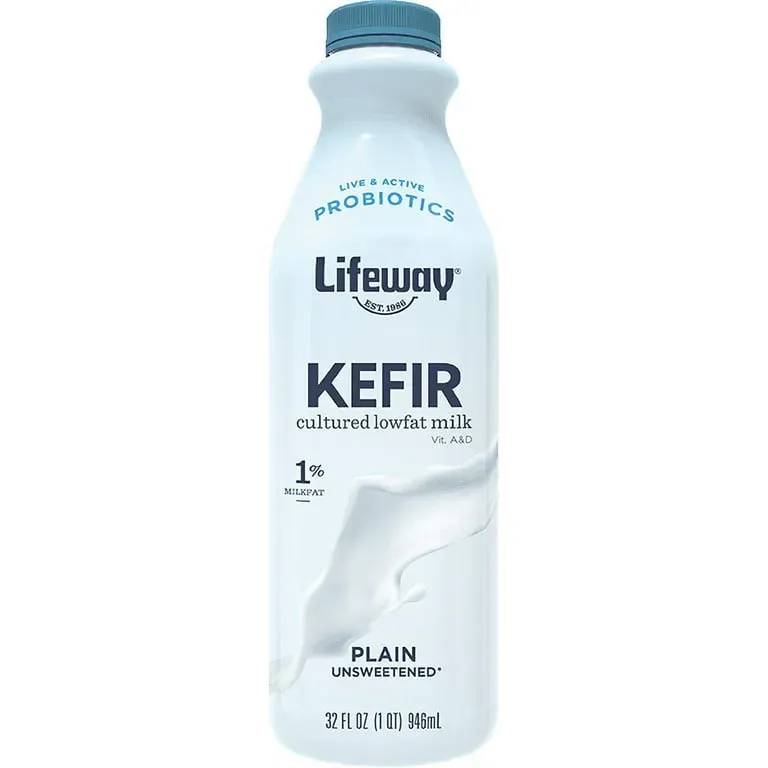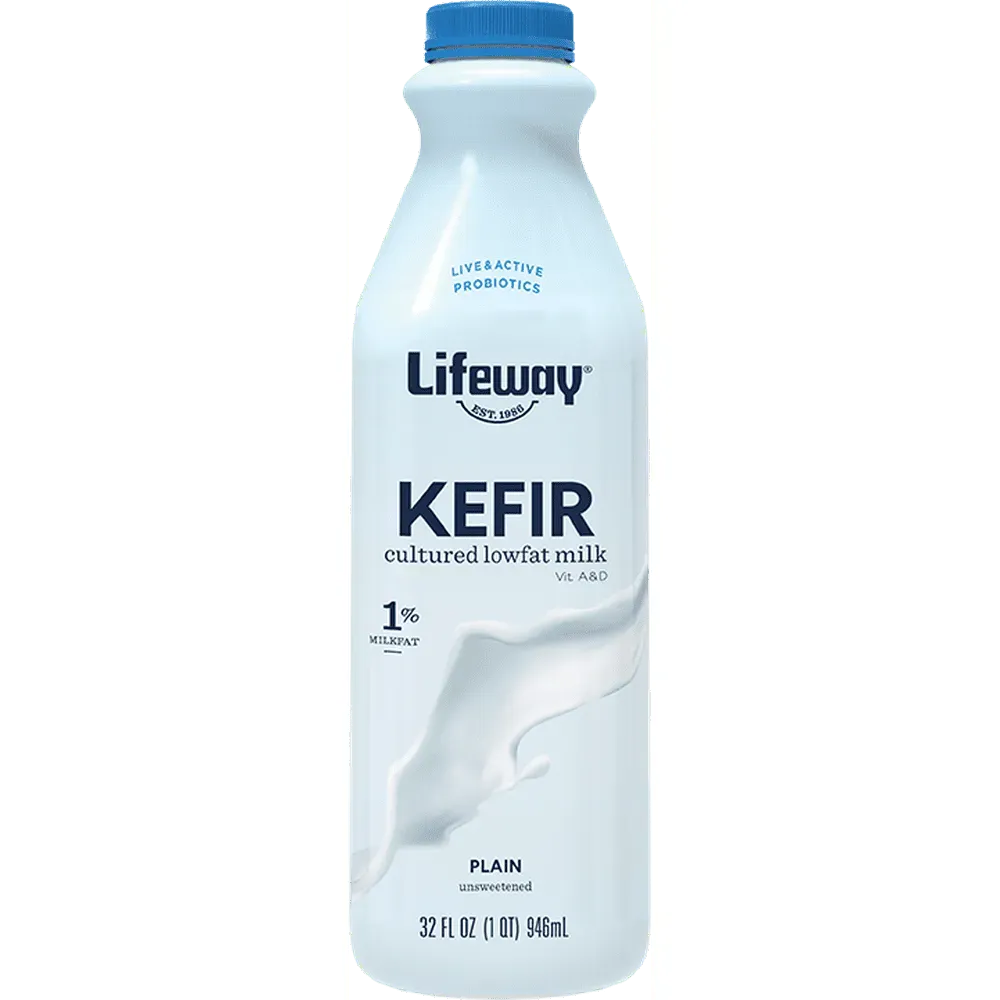Table of Contents
Stepping into the dairy aisle can feel like navigating a minefield of health claims. Every label screams "better for you," but peeling back the layers often reveals a different story. Take kefir, that tangy, probiotic-rich drink everyone's talking about. Then you spot it: **kefir low fat milk**. The immediate thought is usually, "Ah, the healthier choice, right?" But is stripping away the fat truly the magic bullet for your gut health, or are you just getting a watered-down version of the real deal? This isn't just about calorie counting; it's about understanding what you gain and what you might lose. We're cutting through the noise to give you the unvarnished truth about kefir low fat milk. We'll dig into what sets it apart, weigh its benefits against regular kefir, and show you practical ways to use it if it fits your goals. Get ready to separate the marketing spin from the actual nutritional punch and get your common questions answered.
What Exactly is Kefir Low Fat Milk?

What Exactly is Kefir Low Fat Milk?
Breaking Down the Basics
So, you've seen it sitting there, maybe next to the full-fat stuff, looking all innocent and "healthier." What exactly is kefir low fat milk? At its core, it's fermented milk, just like regular kefir. The key difference, as the name subtly suggests, is the starting ingredient. Instead of using whole milk, producers start with milk where a significant portion of the fat has been removed. Think of it as kefir's leaner cousin. The fermentation process itself uses kefir grains – not actual grains like wheat or rice, but symbiotic colonies of bacteria and yeasts held together by a polysaccharide matrix. These little powerhouses consume the lactose (milk sugar) and produce lactic acid, carbon dioxide, and a host of other beneficial compounds, including probiotics. The result is that signature tangy taste and slightly fizzy texture, but with a different nutritional profile right from the get-go.
Where Does the Fat Go?
The journey to becoming kefir low fat milk starts before the fermentation even begins. Standard milk is put through a process called centrifugal separation. Essentially, the milk is spun at high speed, causing the lighter fat globules to separate from the heavier skim milk. The cream is siphoned off, leaving behind milk with a reduced fat content. This low-fat or skim milk is then inoculated with the kefir grains or a starter culture derived from them. The microbes get to work, transforming the lactose and developing the distinct flavor and texture. The end product retains the probiotic benefits associated with traditional kefir, but with fewer calories and less saturated fat compared to its full-fat counterpart. It’s a deliberate choice in processing to cater to those looking to reduce their fat intake, aiming for a specific nutritional target.
- Made from milk with reduced fat
- Fermented using kefir grains or starter culture
- Contains probiotics, similar to regular kefir
- Often has a tangier, less creamy texture
- Lower in calories and saturated fat than whole milk kefir
LowFat Kefir vs. Regular: What's the Real Difference?

LowFat Kefir vs. Regular: What's the Real Difference?
The Fat Content Face-Off
so you've got the basic idea: kefir low fat milk starts with less fat. That's the headline difference, obviously. Regular, whole milk kefir keeps most of the milk fat intact. This isn't just about numbers on a nutrition label, although those are significant. Less fat means fewer calories per serving, which is a big draw for some people focused on energy intake. But that fat also contributes something crucial: mouthfeel. Whole milk kefir is typically creamier, richer, and has a more substantial texture. Kefir low fat milk, on the other hand, tends to be thinner, sometimes a bit more watery, and often has a more pronounced tang because the fat isn't there to mellow out the acidity produced during fermentation. It’s less of a dessert-like drink and more of a… well, a low-fat dairy product that happens to be fermented.
Beyond the Calories: Nutritional Trade-offs
Stripping out the fat from milk before fermentation doesn't just change the calorie count; it alters the entire nutritional profile in subtle ways. Fat isn't just filler; it's essential for absorbing certain vitamins, specifically the fat-soluble ones like A, D, E, and K. While some of these might be added back into low-fat milk, the natural presence and absorption can be different. Regular, full-fat kefir also contains beneficial fatty acids that aren't present in significant amounts in kefir low fat milk. We're talking about things like conjugated linoleic acid (CLA), which some studies suggest might have health benefits, though the research is still evolving. While the probiotic content is generally similar between the two, assuming they were made with the same quality cultures, the overall package of nutrients shifts when you remove the fat.
Feature | Whole Milk Kefir | Kefir Low Fat Milk |
|---|---|---|
Fat Content | Higher | Lower |
Calories | Higher | Lower |
Texture | Creamier, Richer | Thinner, Less Rich |
Fat-Soluble Vitamins (A, D, E, K) | Naturally Present, Better Absorption | May be Added, Absorption Potentially Reduced |
Beneficial Fatty Acids (e.g., CLA) | Present | Minimal |
Taste, Texture, and Application
How does this play out when you actually drink or use it? The difference in taste and texture is often the most noticeable thing for people. If you love the rich, indulgent feel of dairy, kefir low fat milk might feel a bit... lacking. It's tangier, sometimes almost sharp, and definitely less viscous. This isn't necessarily a bad thing; it just means it behaves differently. It can be great in smoothies where you want the probiotic kick without adding extra richness. Some people prefer its lighter feel simply for drinking straight. Full-fat kefir often works better as a base for parfaits or as a sour cream substitute in recipes where you need that body and richness. Ultimately, the "better" one really depends on your personal preference, dietary goals, and how you plan to use it. Don't let anyone tell you one is universally superior; they just have different strengths.
Getting the Benefits: Why Choose Kefir Low Fat Milk?

Getting the Benefits: Why Choose Kefir Low Fat Milk?
Cutting Calories, Not Probiotics (Mostly)
let's talk about why someone might actually reach for the kefir low fat milk instead of its richer sibling. The most obvious reason is calorie and fat reduction. If you're actively managing your calorie intake or trying to lower your saturated fat consumption, swapping full-fat dairy for lower-fat versions is a standard play. Kefir low fat milk delivers the goods on this front. You get the fermentation magic, the tangy kick, and importantly, the probiotics, without the added energy density that comes with milk fat. Think of it as getting the primary health driver – those beneficial bacteria – with fewer extras. It's a strategic move for someone tracking macros or simply trying to lighten up their diet without ditching fermented foods.
This focus on lower fat isn't just about weight management, though that's a common driver. For some dietary approaches, like certain heart-healthy plans, reducing saturated fat is a primary recommendation. Choosing kefir low fat milk aligns with those guidelines. Plus, it still provides a decent dose of calcium and protein, contributing to your daily nutrient intake. It's not just empty calories you're removing; you're getting a nutrient-contributing food that fits into a lower-fat framework. Just don't expect it to taste like dessert; that's not its job. Its job is to deliver probiotics and nutrients without bringing the full-fat party to your calorie budget.
- Lower in calories and saturated fat
- Still provides beneficial probiotics
- Good source of calcium and protein
- Fits into fat-restricted dietary plans
- Offers a lighter alternative to full-fat kefir
Finding and Using Kefir Low Fat Milk in Your Kitchen

Finding and Using Kefir Low Fat Milk in Your Kitchen
so you've decided that kefir low fat milk fits the bill for your goals. Great. Now, where do you actually get the stuff, and what do you do with it once it's chilling in your fridge? Finding kefir low fat milk is usually pretty straightforward. Most major grocery stores carry it alongside the regular kefir and other fermented dairy products. Look in the dairy aisle, often near the yogurts or other specialty milks. Brands vary, and the exact fat percentage might too – some are labeled "low-fat," others "non-fat" or "skim." Check the nutrition label if you're aiming for a specific number. Once you have it, the kitchen is your playground, though maybe not as rich a playground as with the full-fat version. Think smoothies, overnight oats, or even just a quick, tangy drink on its own. Its thinner consistency makes it blend easily without making things overly thick.
Common Questions About Kefir Low Fat Milk Answered

Common Questions About Kefir Low Fat Milk Answered
the internet is full of questions, and when it comes to something like kefir low fat milk, people want straight answers without the fluff. The big ones usually revolve around whether it has the same probiotic punch as full-fat versions (generally, yes, if the culture is the same, the microbes don't care about the fat percentage), if it's actually good for lactose intolerance (often, because the fermentation process breaks down much of the lactose, making kefir low fat milk potentially easier on the stomach than regular milk, though individual tolerance varies wildly), and if you can swap it into recipes that call for regular kefir (sometimes, but be ready for a thinner result, so maybe not for that creamy dip). People also wonder about the sugar content in flavored versions – hint: check the label, it can be shockingly high, even if the fat is low. Sticking to plain kefir low fat milk is usually the safest bet if you're watching sugar intake.
The Final Word on Low-Fat Kefir
So, where does that leave us with kefir low fat milk? It's not the villain, but it's certainly not the undisputed champion of the dairy aisle either. You get the probiotics, sure, and fewer calories from fat. But you might also lose some of the creamy texture and potentially miss out on the fat-soluble vitamins that full-fat dairy offers. The "healthier" label often slapped onto low-fat options needs a closer look. If you're strictly managing fat intake for specific health reasons, it can be a tool. Otherwise, don't feel pressured to pick it just because the carton says "low fat." The key is understanding the trade-offs and choosing what genuinely aligns with your dietary needs and preferences, not just following the latest marketing trend.
